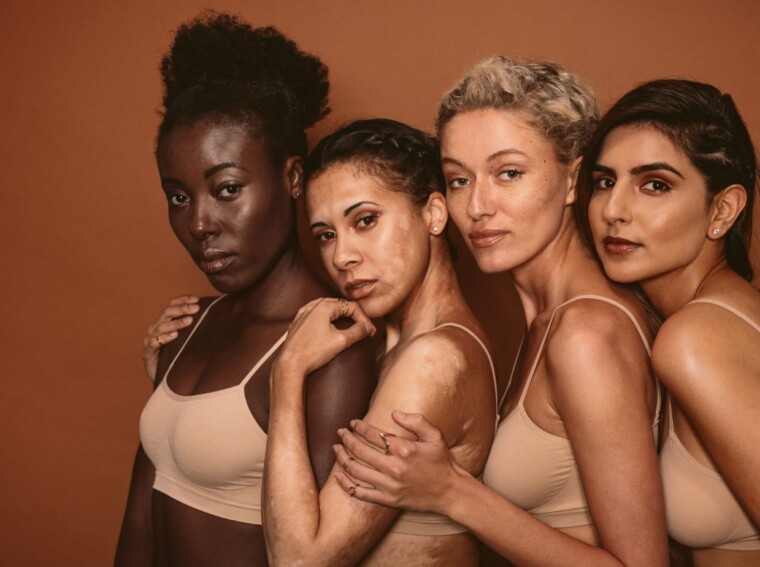 When mysterious brown spots start appearing on your skin, it’s natural to feel a bit alarmed. Known as bercak coklat di kulit seperti panu in Indonesian, these skin changes can be a source of confusion and concern. But what exactly are these spots, and should you be worried?In this article, we’ll delve into the science behind these brown spots, exploring their causes, symptoms, and potential treatments. We’ll dispel some myths, provide some facts, and hopefully put your mind at ease. So, if you’ve noticed some unusual pigment changes on your skin, stay tuned for some enlightening insights.
When mysterious brown spots start appearing on your skin, it’s natural to feel a bit alarmed. Known as bercak coklat di kulit seperti panu in Indonesian, these skin changes can be a source of confusion and concern. But what exactly are these spots, and should you be worried?In this article, we’ll delve into the science behind these brown spots, exploring their causes, symptoms, and potential treatments. We’ll dispel some myths, provide some facts, and hopefully put your mind at ease. So, if you’ve noticed some unusual pigment changes on your skin, stay tuned for some enlightening insights.
Bercak Coklat Di Kulit Seperti Panu
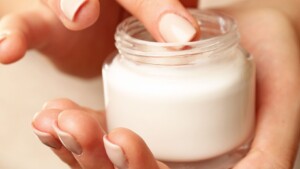 These mysterious brown spots, known locally as bercak coklat di kulit seperti panu, intrigue medical professionals for their varied causal factors. Their occurrence, precipitated by diverse culprits such as sun exposure or hormonal changes, presents in individuals globally.Dermatologists identify environmental influences as a primary factor for these spots. Ultraviolet (UV) rays, for example, exacerbate melanin production in the skin. This hyperactivity in melanin production consequently leads to these brown spots. Similarly, hormonal fluctuations, particularly in women experiencing pregnancy or menopause, create conditions conducive to the formation of these brown spots.Despite their distinct features, these spots are quite harmless. Typical symptoms include faint brown patches that progressively darken, concentrating particularly on sun-exposed areas such as the face, back of the hands and shoulders. However, the presence of such patches, regardless of their benign nature, can cause self-consciousness or distress in individuals affected.Discussion abounds regarding effective remedies for these spots. Skin-lightening creams, laser therapy, and chemical peels are some treatments that can diminish this skin hyperpigmentation. Skin-lightening creams, inclusive of hydroquinone, lighten spots gradually over months. On the other hand, laser therapy and chemical peels offer quicker results, yet require multiple sessions and downtime for skin recovery.
These mysterious brown spots, known locally as bercak coklat di kulit seperti panu, intrigue medical professionals for their varied causal factors. Their occurrence, precipitated by diverse culprits such as sun exposure or hormonal changes, presents in individuals globally.Dermatologists identify environmental influences as a primary factor for these spots. Ultraviolet (UV) rays, for example, exacerbate melanin production in the skin. This hyperactivity in melanin production consequently leads to these brown spots. Similarly, hormonal fluctuations, particularly in women experiencing pregnancy or menopause, create conditions conducive to the formation of these brown spots.Despite their distinct features, these spots are quite harmless. Typical symptoms include faint brown patches that progressively darken, concentrating particularly on sun-exposed areas such as the face, back of the hands and shoulders. However, the presence of such patches, regardless of their benign nature, can cause self-consciousness or distress in individuals affected.Discussion abounds regarding effective remedies for these spots. Skin-lightening creams, laser therapy, and chemical peels are some treatments that can diminish this skin hyperpigmentation. Skin-lightening creams, inclusive of hydroquinone, lighten spots gradually over months. On the other hand, laser therapy and chemical peels offer quicker results, yet require multiple sessions and downtime for skin recovery.
What Is Bercak Coklat Di Kulit Seperti Panu?
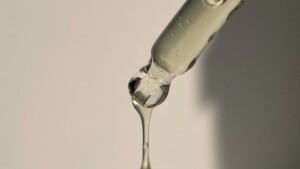 Bercak coklat di kulit seperti panu refers to brown patches on the skin that display similarity to tinea versicolor, a common skin condition. These patches or spots appear darker than the surrounding skin, resulting in an uneven skin tone. However, unlike tinea versicolor, these patches lack the typical rash associated with the condition.Proper identification of these brown spots is critical for effective management and treatment, preventing potential impacts on an individual’s self-esteem and confidence.
Bercak coklat di kulit seperti panu refers to brown patches on the skin that display similarity to tinea versicolor, a common skin condition. These patches or spots appear darker than the surrounding skin, resulting in an uneven skin tone. However, unlike tinea versicolor, these patches lack the typical rash associated with the condition.Proper identification of these brown spots is critical for effective management and treatment, preventing potential impacts on an individual’s self-esteem and confidence.
The Main Causes of Bercak Coklat Di Kulit Seperti Panu
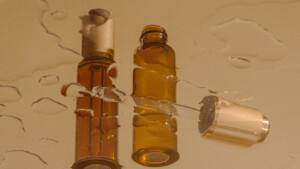 Primary causes of bercak coklat di kulit seperti panu are environmental influences and hormonal changes.
Primary causes of bercak coklat di kulit seperti panu are environmental influences and hormonal changes.
- Sun exposure: Over time, exposure to the sun’s UV rays stimulates the production of melanin, the pigment responsible for skin coloration. Resultantly, areas of the skin subjected to prolonged sun exposure develop these brown patches.
- Hormonal changes: Fluctuations in hormones, especially during significant life events such as pregnancy and menopause, can also lead to the development of these brown patches.
Understanding the key causes aids in devising effective preventive measures and treatment plans for bercak coklat di kulit seperti panu. Simple steps like wearing sun-protective clothing or using hormone-balancing treatments can help manage the condition. Suitable treatment options, determined by a dermatologist, further the odds of maintaining clear, even-toned skin.
Identifying Common Symptoms
 The first key to spotting bercak coklat di kulit seperti panu is the discoloration on one’s skin. These marks generally appear as brown spots or patches with a texture not unlike normal skin. These patches often display uniformity in color and texture but may occasionally vary depending on individual skin types. For example, some people may experience lighter or darker patches compared to their normal skin tone.Rashes or spots occur predominantly on sun-exposed areas such as the back, chest, and upper arms. Patches span sizes ranging from small spots of a few millimeters to larger areas that can cover an entire back. A patch often measures around 1-3 cm in diameter but they can merge to form larger spots on the skin. However, the occurrence of these patches does not induce physical discomfort as they generally are symptomless.
The first key to spotting bercak coklat di kulit seperti panu is the discoloration on one’s skin. These marks generally appear as brown spots or patches with a texture not unlike normal skin. These patches often display uniformity in color and texture but may occasionally vary depending on individual skin types. For example, some people may experience lighter or darker patches compared to their normal skin tone.Rashes or spots occur predominantly on sun-exposed areas such as the back, chest, and upper arms. Patches span sizes ranging from small spots of a few millimeters to larger areas that can cover an entire back. A patch often measures around 1-3 cm in diameter but they can merge to form larger spots on the skin. However, the occurrence of these patches does not induce physical discomfort as they generally are symptomless.
When to Seek Medical Advice
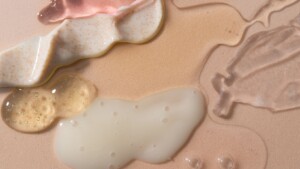 Medical advice becomes paramount when these patches persist or cause distress. It’s recommended to consult a dermatologist if patches increase in size, multiply, or create an unexpected change in appearance. In rare instances, these patches may cause mild itchiness, though not a consistent feature of bercak coklat di kulit seperti panu.Embarking on a skin health journey necessitates professional advice, helping detect underlying issues if present, and prescribing an effective treatment regime. Avoid self-diagnosis and ensure consultation with skin specialists, enhancing chances of a clearer, healthier skin.
Medical advice becomes paramount when these patches persist or cause distress. It’s recommended to consult a dermatologist if patches increase in size, multiply, or create an unexpected change in appearance. In rare instances, these patches may cause mild itchiness, though not a consistent feature of bercak coklat di kulit seperti panu.Embarking on a skin health journey necessitates professional advice, helping detect underlying issues if present, and prescribing an effective treatment regime. Avoid self-diagnosis and ensure consultation with skin specialists, enhancing chances of a clearer, healthier skin.
Diagnostic Procedures
The diagnostic procedures for bercak coklat di kulit seperti panu are systematic, involving rigorous stages in which evidence is gathered and analyzed by medical professionals to confirm the presence of this condition.This process begins with careful inspection of the skin and could lead to detailed lab tests for an in-depth elucidation of the situation.
From Visual Checking to Detailed Labs
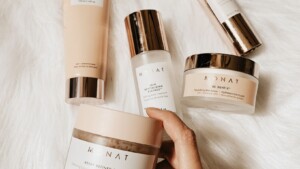 Initial visual examination acts as a cornerstone in diagnosing bercak coklat di kulit seperti panu. A dermatologist, during the primary consultation, inspects the skin closely for nuances in pigmentation, signs of uneven coloring, or asymmetric borders. In some cases, dermoscopy – a procedure using a specialized microscope, helps in a more detailed examination of skin.However, it doesn’t stop at visual inspection. In instances of uncertainty or when further confirmation is necessary, physicians opt for detailed laboratory tests. These may encompass biopsy, wherein a small portion of the skin is sampled and sent to a lab for microscopic evaluation. This process helps in ruling out other conditions with similar manifestations, like melanoma, providing a more precise diagnosis.
Initial visual examination acts as a cornerstone in diagnosing bercak coklat di kulit seperti panu. A dermatologist, during the primary consultation, inspects the skin closely for nuances in pigmentation, signs of uneven coloring, or asymmetric borders. In some cases, dermoscopy – a procedure using a specialized microscope, helps in a more detailed examination of skin.However, it doesn’t stop at visual inspection. In instances of uncertainty or when further confirmation is necessary, physicians opt for detailed laboratory tests. These may encompass biopsy, wherein a small portion of the skin is sampled and sent to a lab for microscopic evaluation. This process helps in ruling out other conditions with similar manifestations, like melanoma, providing a more precise diagnosis.
What Does a Diagnosis Mean?
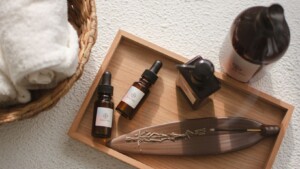 A conclusive diagnosis is pivotal, as it informs the subsequent decision-making path. When bercak coklat di kulit seperti panu is confirmed, it signals not only the presence of brown patches on the skin but underlines the causal factors behind them. The diagnosis begets a comprehensive understanding of the condition, its severity, and implications, setting the stage for an effective treatment approach. Finally, remember, early diagnosis leads to optimal management of the condition and reduces the chances of complications. So, consult a dermatologist if you suspect some irregularities such as brown spots on your skin.
A conclusive diagnosis is pivotal, as it informs the subsequent decision-making path. When bercak coklat di kulit seperti panu is confirmed, it signals not only the presence of brown patches on the skin but underlines the causal factors behind them. The diagnosis begets a comprehensive understanding of the condition, its severity, and implications, setting the stage for an effective treatment approach. Finally, remember, early diagnosis leads to optimal management of the condition and reduces the chances of complications. So, consult a dermatologist if you suspect some irregularities such as brown spots on your skin.
Treatment Options
The strategies that enable resolution or management of bercak coklat di kulit seperti panu range from over-the-counter options to professional ones. The choice depends on the severity, area of skin affected, and the individual’s health status.
Over-The-Counter Treatments
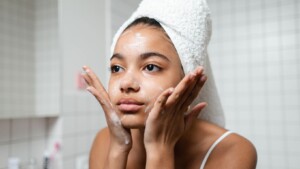 A vast array of over-the-counter (OTC) treatments can come in handy for bercak coklat di kulit seperti panu. Hydroquinone is a key ingredient in many skin lightening creams. It’s known for its ability to reduce the melanin in one’s skin, thereby lightening its tone and reducing brown spots.Regular application of broad-spectrum sunscreen, with a Sun Protection Factor (SPF) of 30 or more, also proves beneficial. Sunscreen helps to shield the skin from harmful UV rays, thus preventing further pigmentation.Plants extracts like Licorice and Niacinamide can also serve as effective OTC treatments. They’ve been noted for their skin-brightening properties and have been increasingly incorporated into skincare products in recent years.
A vast array of over-the-counter (OTC) treatments can come in handy for bercak coklat di kulit seperti panu. Hydroquinone is a key ingredient in many skin lightening creams. It’s known for its ability to reduce the melanin in one’s skin, thereby lightening its tone and reducing brown spots.Regular application of broad-spectrum sunscreen, with a Sun Protection Factor (SPF) of 30 or more, also proves beneficial. Sunscreen helps to shield the skin from harmful UV rays, thus preventing further pigmentation.Plants extracts like Licorice and Niacinamide can also serve as effective OTC treatments. They’ve been noted for their skin-brightening properties and have been increasingly incorporated into skincare products in recent years.
Professional Treatments Available
 For individuals with significant and stubborn bercak coklat di kulit seperti panu, professional treatments might be a more effective approach. These methods include but not limited to, microdermabrasion, chemical peels, laser therapy and cryotherapy.Microdermabrasion is a skin resurfacing technique that abrades the top layer of the skin, hence stimulating the growth of new, healthier skin cells.Chemical peels, on the other hand, uses mild chemical solutions to slough off dead skin cells and make way for new ones.Laser therapy uses a concentrated beam of light to remove the layers of skin with brown spots. While cryotherapy freezes the area with liquid nitrogen, leading to the dark spots to peel off naturally. Both methods aim to bring about a more uniform skin tone.It’s important to note that professional treatments must be administered by a licensed professional due to their invasive nature.
For individuals with significant and stubborn bercak coklat di kulit seperti panu, professional treatments might be a more effective approach. These methods include but not limited to, microdermabrasion, chemical peels, laser therapy and cryotherapy.Microdermabrasion is a skin resurfacing technique that abrades the top layer of the skin, hence stimulating the growth of new, healthier skin cells.Chemical peels, on the other hand, uses mild chemical solutions to slough off dead skin cells and make way for new ones.Laser therapy uses a concentrated beam of light to remove the layers of skin with brown spots. While cryotherapy freezes the area with liquid nitrogen, leading to the dark spots to peel off naturally. Both methods aim to bring about a more uniform skin tone.It’s important to note that professional treatments must be administered by a licensed professional due to their invasive nature.
